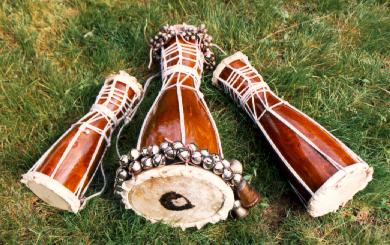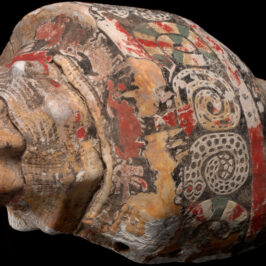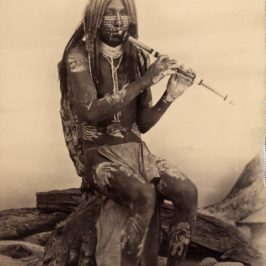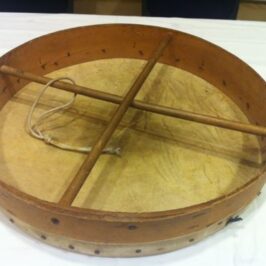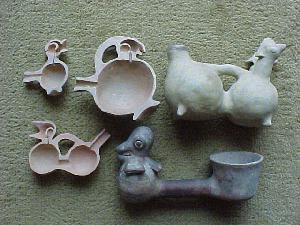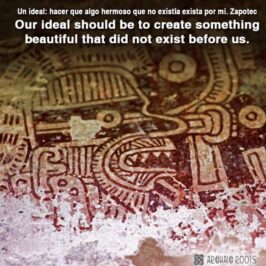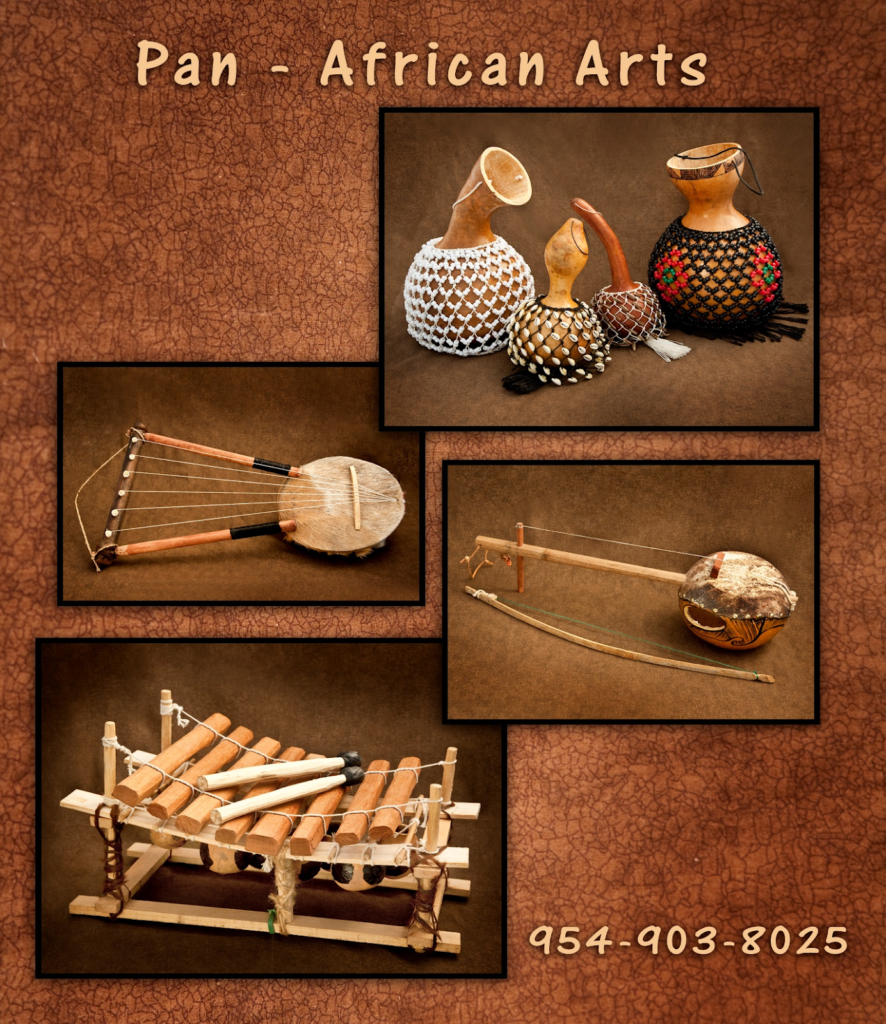
What led to your interest in learning to make instruments?
I became interested in musical instruments during my early childhood in Griffin, Georgia, where friends and I would make a number of our playthings. These included non-musical items such as stilts, kites, and bullroarers and musical ones such as keg-and tin can-based drums, and comb-and-tissue kazoos.
Did anything influence your choice to make instruments professionally?
My decision to pursue instrument making professionally came about in the early 1990s, when I began considering adding another revenue stream to my freelance writing and college-level teaching activities.
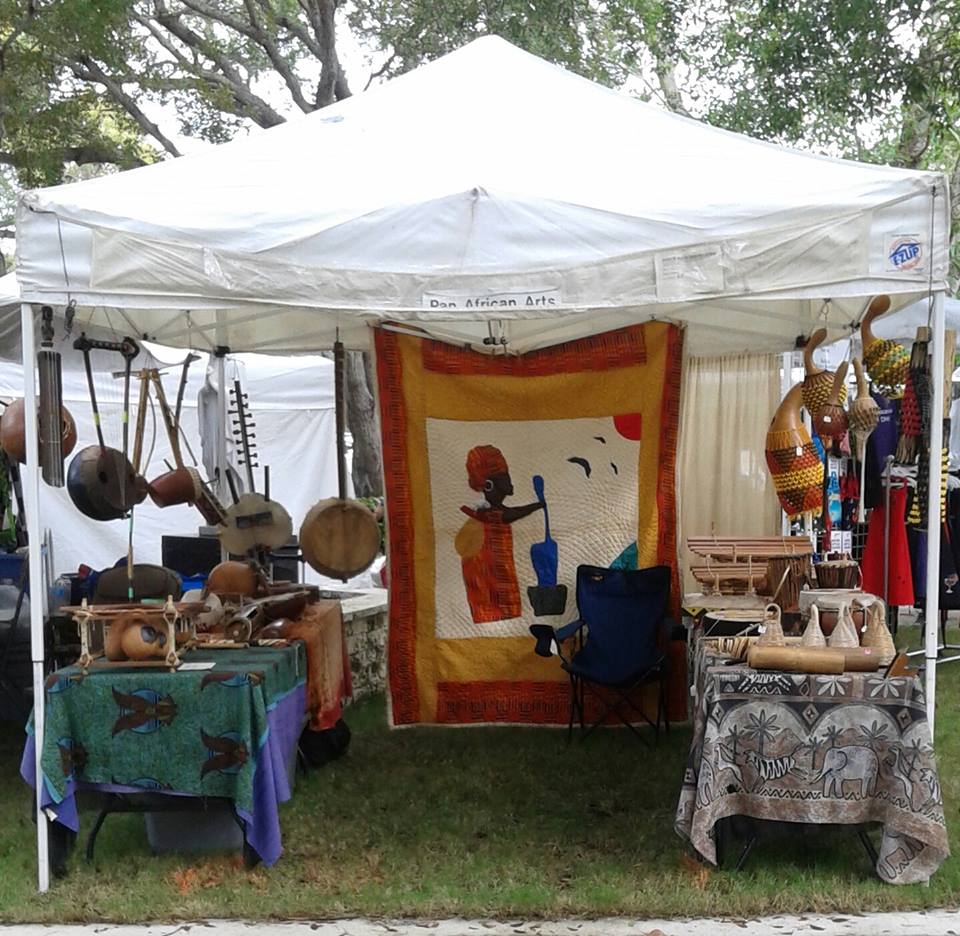
What kind of instruments do you make?
I craft a number of African and African-derived musical instruments, ranging from xylophones and “thumb pianos” to harps and drums.
wikipedia
The balafon is a kind of xylophone or percussion idiophone which plays melodic tunes, and usually has between 16 and 27 keys. It has been played in Africa since the 12th century according to oral stories; it originated in Mali, according to the Manding history narrated by the griots
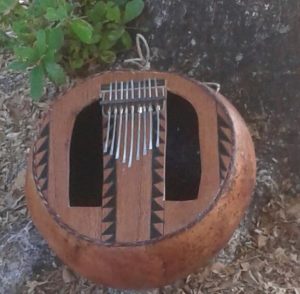
The mbira (pronounced UM-beer-ra , IPA (ə)mˈbɪərə) is an African musical instrument consisting of a wooden board (often fitted with a resonator) with attached staggered metal tines, played by holding the instrument in the hands and plucking the tines with the thumbs. The mbira is usually classified as part of the lamellaphone family and part of the idiophone family of musical instruments.
wikipedia
wikipedia
African Harps, particularly arched or “bow” harps, are found in several Sub-Saharan African music traditions, particularly in the north-east. Used from early times in Africa, they resemble the form of harps in ancient Egypt with a vaulted body of wood, parchment faced, and a neck, perpendicular to the resonant face, on which the strings are wound
wikipedia
The shekere (from Yoruba Ṣẹ̀kẹ̀rẹ̀)[1] is a West African percussion instrument consisting of a dried gourd with beads or cowries woven into a net covering the gourd. The instrument is common in West African and Latin American folkloric traditions as well as some of the popular music styles. In performance it is shaken and/or hit against the hands.
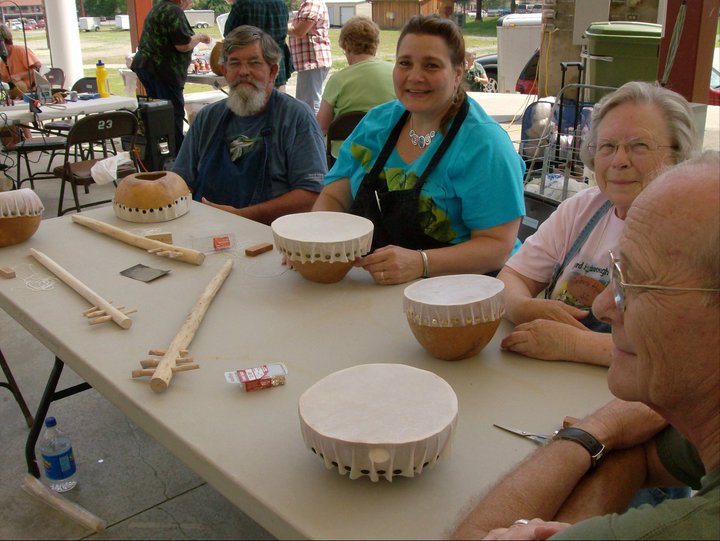
Zeze-making workshop: Qualla Boundary (Cherokee Indian Reservation), Cherokee, North Carolina – Ancestral Memory
Were you self taught, or did you have an instrument making teacher or apprenticeship?
I’m partly self-taught, but much of what I’ve learned has come through observation of other makers and informal instruction.
Do you have a special process for making instruments?
Yes, special processes are involved in crafting intricate instruments such as xylophones, harps, lutes, and certain drums.
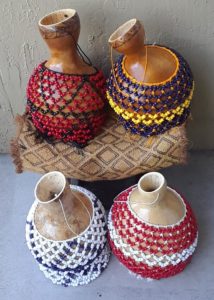
How important is this type of work for you?
As I see it, this work is extremely important.
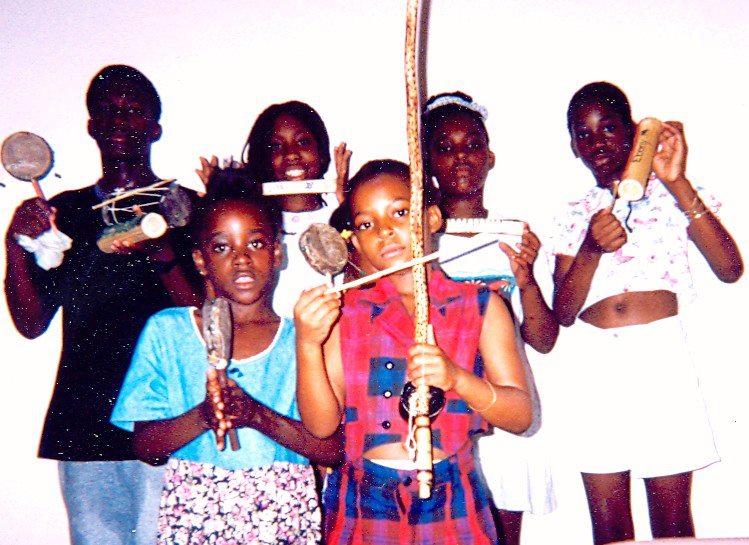
Do you consider yourself a keeper of this piece of culture for future generations?
I see myself and other craftsmen of African descent as playing a needed role in ensuring the survival and preservation of a culture that is being threatened by global economic forces.
Do you use any instruments you make, if so how?
I use certain of the instruments that I craft in lecture-demonstrations at community centers, museums, and other venues in Florida, Georgia, the Carolinas, and beyond.
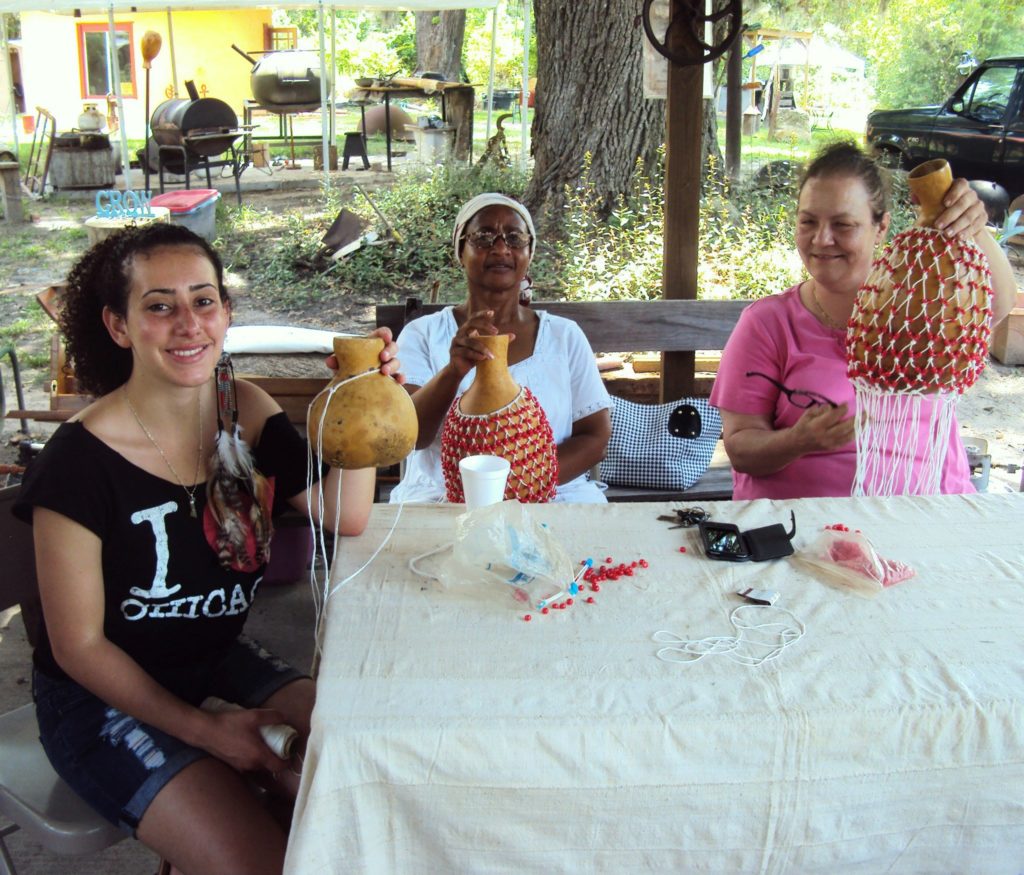
Do you teach people your craft in anyway; such as workshops, classes, apprenticeships or other educational outlets?
I pass on what I know in instrument-making workshops, and I once participated in the Florida Department of State’s Folklife Apprenticeship Program (the late ‘90s) in which I took on an apprentice.
How do you give back to your community?
I give back to my community by offering occasional lectures and lecture-demonstrations gratis.
Do you perceive a spiritual purpose for the instruments you make?
The instruments are spiritual in that they are crafted from living things, such as trees, bamboo, gourds, etc., which are imbued with spirit. Those spirits then become part of the completed musical instruments.
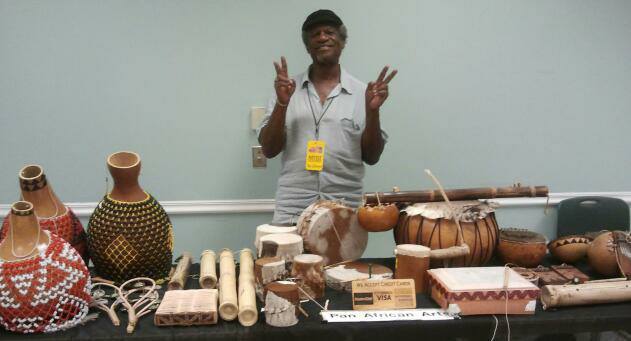
Does your spiritual perspective influence your instrument making process?
I honor the cultures from which my instruments originate by trying to limit my use of commercial technology so that the instruments remain recognizable as traditional instruments.
Do you see a resurgence indigenous instrument making and usage?
I do see a resurgence of interest in making and using indigenous musical instruments, whether Native American, African, Asian, or other.
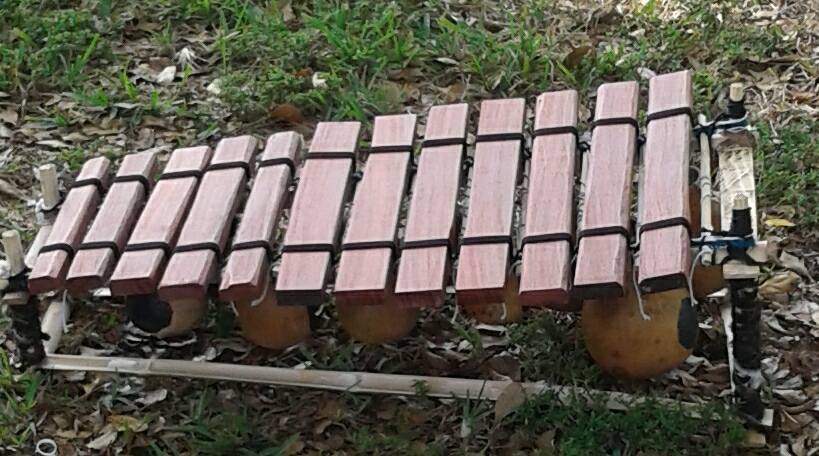
What kinds of changes would you like to see in our instrument making world?
What I’d like to see in the instrument-making world is a greater appreciation, and respect, for the creators of these musical items and less pillaging of the originating cultures by over-commercialization and appropriation.
Do you offer your instruments for sale?
I offer my instruments for sale at arts and crafts shows and other special events as well as online at www.etsy.com/shop/PanAfricanArts.
What’s in store for the future of your work making instruments?
In the future, I see myself devoting less time to crafting instruments and more time offering presentations (lectures, lecture-demonstrations, instrument-making workshops) and completing work on book projects.
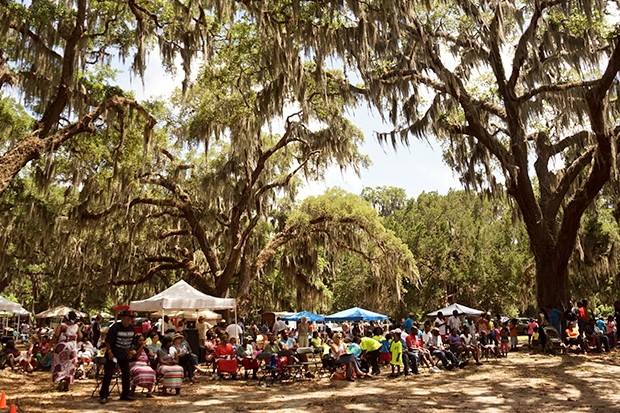
Where can we find your work?
My offerings can be found at www.ancestralmemory.com and at the aforementioned Etsy platform.
Ancestral Memory: Our aim is to assist in the task of reclaiming those African cultural manifestations which either have been abandoned or misappropriated and in preserving those which are on the verge of dying out.
Call (954) 903-8025 – eddie@ancestralmemory.com – http://www.ancestralmemory.com – https://www.facebook.com/osboed/ – www.etsy.com/shop/PanAfricanArts
Thanks Eddie for the awesome interview!


